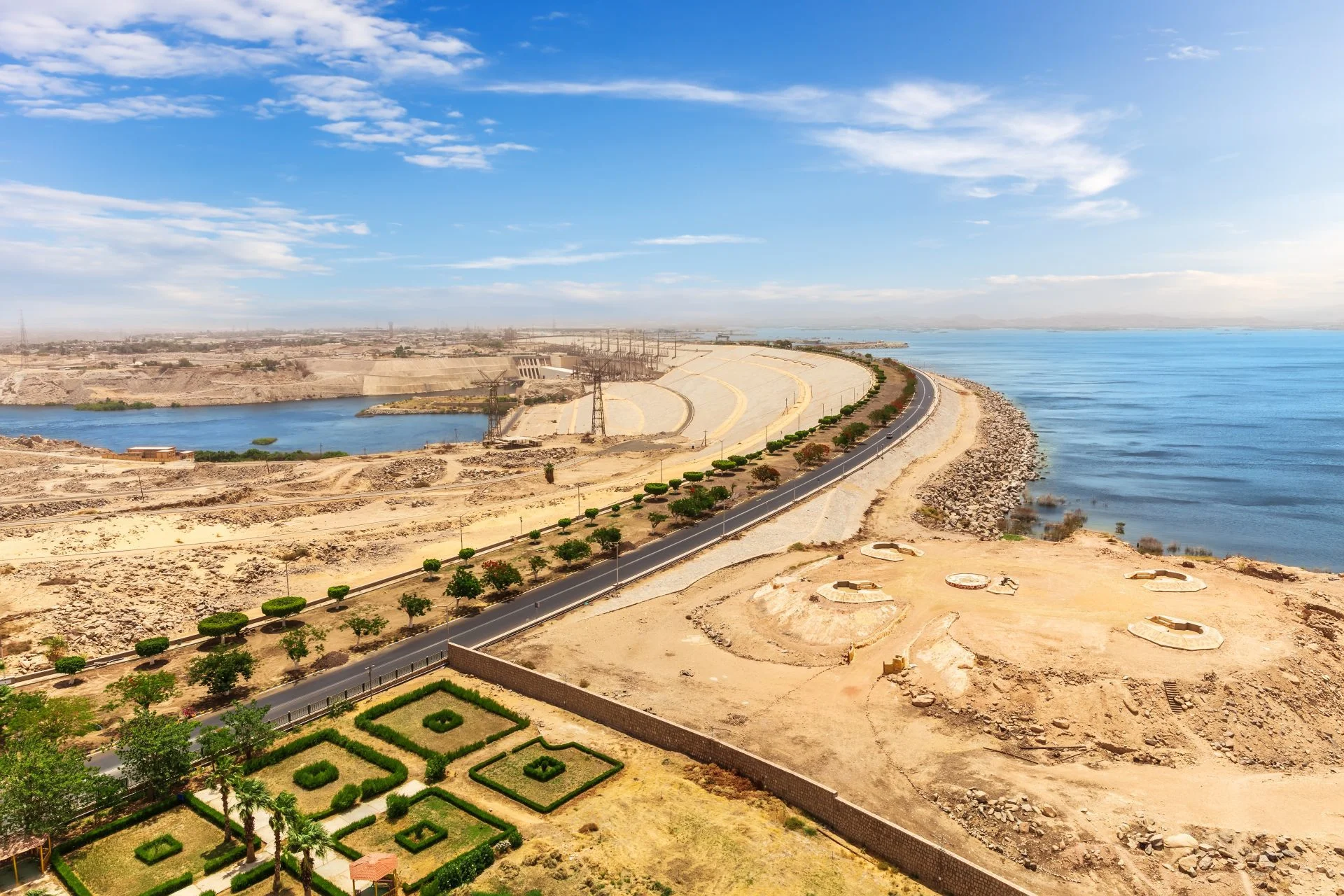For thousands of years, the people of North Eastern Africa have relied on the Nile River as their primary source of life sustaining water.
One of the longest rivers in the world, the Nile flows for over 4100 miles from Lake Victoria to the Mediterranean Sea. Annual floods in a season the Ancient Egyptians called “akhet” – the inundation, provided ancient cultures and civilisations along the river with rich silt to enhance the soil needed for food production.
In the 1950s, a dam was proposed to control the flooding and provide hydroelectric power to Egypt, with construction beginning in 1960. The plan was to form a lake behind the dam that would enable farmers to construct a series of channels for irrigation, prevent cliff erosion and provide a reliable source of drinking water.
Prior to the dam’s construction, UNESCO enacted a plan to move historic monuments and structures above the flood waters, including the famous Abu Simbel complex, the temples of Philae island, the temples of Beit el Wali and Kalabsha and the Kiosk of Qertassi near the High Dam, the temples of Dakka, Maharraqa and Wadi es Sebua near the former site of Wadi es Sebua, the temples of Amada and Derr and Pennut’s Tomb at Aniba near the former site of Amada, and the temples of Aksha, Buhen, Semna East and Semna West.
With the formation of Lake Nasser covering thousand of square miles, North Egypt (also known as Lower Egypt) found that the normal deposition of the yearly flood nutrient-rich silt stopped, leading to farmers relying on artificial fertilisers to grow their crops. In addition to putting an economic strain on farmers, the buying of fertilisers also caused a runoff of toxic chemicals into the river, wreaking havoc on the natural environment and ecosystem.

The dam also stopped the ‘housecleaning’ of a deadly parasite called bilharzia (also known as snail fever, schistosomiasis or katayama fever), caused by parasitic flatworms called schistosomes which are released from infected freshwater snails, resulting in liver damage, kidney failure, infertility, or bladder cancer in those infected.
Prior to the dam’s construction, 60-180 million tons of sediments and countless millions of gallons of water passed through the Nile Delta to the Mediterranean Sea. With very little sediment being deposited in the Delta today, erosion and damage to the natural habitats of animals and native plant life is apparent, while a build-up of salt water will eventually render the soil in the region inhospitable for life to survive.
Another unwelcome result of the dam was the relocation of nomadic tribes and Nubians by the Egyptian government, whose entire way of life was uprooted and/or destroyed, suffering immeasurable detriments to their livestock, culture and livelihood.
Construction of the dam has had some positive results. The hydroelectric power has brought electricity to light some of the most remote villages in Egypt, while the building and maintenance of the dam provides thousands of jobs which benefits the Egyptian economy. Additionally, the resulting Lake Nasser has allowed for a new fishing industry to flourish, providing more food and jobs to the area.
Despite this, Egypt is now in the grips of a pending environmental disaster in the Nile Delta, facing high levels of industrial pollution and excess salinity in the water. This is further expedited by the threat of rising sea levels and climate change, already leaving areas of land no longer viable for farming.
Unless a sustainable balance can be found, the Delta will be unable to sustain the 39 million people who inhabit the region and the scores of plants and animal life, including the world’s largest concentrations of little gulls and whiskered terns.
Written by Julie St Jean
Header Image – Aswan Dam – Image Credit : Shutterstock





